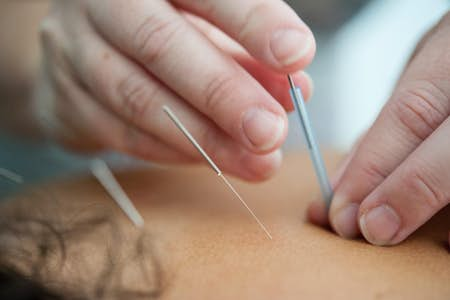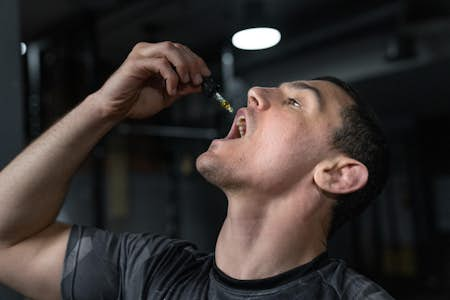Homeopathy has been around for centuries. Developed in the 18th Century by German doctor Samuel Hahnemann, it has become a popular form of alternative medicine today. Based on the idea that the body can heal itself using natural substances, homoeopathic remedies are made with minuscule amounts of plant-based ingredients, herbs, minerals and sometimes animal substances.
Along with the belief that the body can heal itself, homoeopathic treatments are based on the principle that “like cures like”. This means the substances used in homoeopathic remedies are chosen for the similar symptoms they induce in a healthy person to those of the illness a patient is experiencing.
What is homoeopathy?
Homoeopathy is complementary or alternative medicine. This system of medicine uses natural substances to stimulate the body's healing powers. According to homoeopathic theory, all illness begins with an imbalance in the body. Homoeopaths believe they can restore balance and trigger the body's healing response by introducing small amounts of certain substances into the body.
Rather than looking only at the symptoms of an illness, as conventional medicine does, homoeopaths consider the whole person along with their symptoms. Homoeopathic practitioners note patients' physical, mental and emotional conditions and circumstances that make them feel better or worse. This can include movement, stillness, heat and cold, and other factors.
After considering the individual's symptoms, circumstances and situation, a homoeopathic remedy is devised using natural ingredients known to induce similar symptoms in healthy people. These ingredients are used to create homoeopathic dilutions or micro-doses taken by the patient to trigger their body's healing process and reinstate well-being.
Star Freudenberg, a holistic health specialist & educator, told Health Times, "In homoeopathy, each person is seen as unique, and their symptoms and overall constitution are taken into account when prescribing remedies. This personalised approach ensures that the treatment is tailored to the individual's specific needs, maximising the chances of success."
How does homoeopathy work?
Homoeopathic remedies are designed to be administered in minimal doses. In homoeopathy, the aim is to administer the smallest possible quantity of a remedy for the greatest possible benefit. These small doses are believed to stimulate the body's healing process without introducing any potentially harmful side effects or toxins.
The active ingredients of homoeopathic therapies are often infinitesimally small. It is this micro-dosing approach that has conventional medicine questioning the effectiveness of homoeopathic treatments.
There is little scientific evidence that homoeopathic products are effective—the studies cited are often too small to be accepted—and the placebo effect is often credited with any benefits a patient experiences. In 2017 the NHS ceased funding for homoeopathic treatments based on the lack of evidence for their effectiveness.
Over-the-counter homoeopathic remedies
Despite the controversy around the effectiveness of homoeopathy, many homoeopathic remedies are available at health food stores and pharmacies. Homoeopathic gels, creams, tinctures and pills are designed to relieve health conditions such as hay fever, colds, cuts and bruises, and more.
Arnica
This well-known herb is sometimes used to flavour food but is poisonous in large amounts. It is often used in over-the-counter homoeopathic remedies such as creams and balms to treat muscle aches and pains, bruising and osteoarthritis. Homoeopathic treatments meant to be consumed orally only contain trace amounts of the herb, making it safe for consumption.
Rhus tox
Commonly used for muscle aches, sprains, bruising, backache, arthritis and sciatica, this homoeopathic remedy is usually found in the form of pills. In keeping with homoeopathic principles, few molecules of the original substance are found in the tablets. However, these small doses can be enough to trigger your body’s healing response and provide relief from symptoms.
Cantharis
Used in an ointment or gel, cantharis has anti-inflammatory properties and is used to treat burns. This makes it an ideal homoeopathic remedy to keep in the kitchen.
Magnesia phosphoric
Used to treat cramps, tiredness, nerve pain and headaches, homoeopathic treatments with magnesia phosphoric usually come in the form of pills. This is often available in health stores and pharmacies as a remedy for menstrual pain.
Many homoeopathic treatments are bespoke for the patient as they are made to suit the specific symptoms and factors experienced by the individual. For example, poison ivy treatments are commonly used to relieve rheumatoid arthritis, sprains and itch skin. However, it is unlikely any pharmacy would sell these treatments over the counter.
Homoeopathic and naturopathic medicine
Although both homoeopathic treatments and naturopathic medicines use natural substances, they use different treatment methods.
Naturopaths use herbal medicine, nutrition, natural therapeutic methods and substances to treat illnesses. Although many naturopathic treatments are considered alternative or complementary therapies, they don’t always include homoeopathic remedies. Nevertheless, the use of homoeopathy can be found in naturopathic practices.
However, naturopathic treatments aren’t usually provided by homoeopaths. Unless, of course, they are dual-disciplinary healthcare professionals. Homoeopaths' guiding principles of the body's ability to heal itself, like cures like, and minuscule doses of natural substances, are not always held by naturopaths.
How are homoeopathic treatments made?
Homoeopathic treatments are based on the idea that "like cures like", wherein a substance that would typically cause a symptom can be used in minimal doses to treat that same symptom.
To make homoeopathic treatments, practitioners repeatedly shake and dilute the active ingredient in water or alcohol up to several hundred times. This method of succussion creates the remedy known as dilutions. These are then dispensed as drops, made into pills or applied topically as cream or ointment.
Homoeopathic remedies may affect patients suffering from common ailments such as allergies, headaches and stress-related disorders. Some homoeopathic practitioners also believe they can treat more severe illnesses such as sciatica, high blood pressure and skin conditions.
While it’s not well understood how this unconventional treatment works, homoeopathy has been gaining popularity in recent years due to its holistic approach to health care.
Because homoeopathic remedies are made from naturally occurring substances and include such small amounts of active ingredients, they're generally considered safe to use. In addition, most homoeopathic remedies have minimal risk of side effects or allergic reactions. This makes them attractive options for those seeking alternatives to conventional medicines or pharmaceuticals.
How is homoeopathy different from medicine?
Homoeopathy is an alternative form of medical treatment. However, it is generally not accepted by the medical community, and the NHS withdrew funding for homoeopathic treatments in 2017. Conventional medicine views homoeopathy as ineffective due to a lack of evidence or proof of its effectiveness.
Many qualified homoeopaths are members of the UK's Society of Homeopaths. As the UK's largest group of registered homoeopaths, they are an excellent resource for finding a practitioner near you. The Society of Homeopaths requires members to demonstrate their qualifications and capability to practise safely.
Some homoeopaths can also advise patients on natural remedies such as supplements, medicinal herbs and tinctures. Their approach to health and well-being always aims to stimulate your body's healing abilities rather than taking a symptomatic approach. While homoeopathy has been used worldwide for centuries, current research has not met conventional medicine’s standards for proving homoeopathy’s benefits.
Homoeopathy may not be recommended as a medical treatment by your doctor, and the NHS doesn't cover it. So before trying homoeopathic remedies, you should always talk things over with your GP. This will ensure they won't react adversely with any other medications you may be taking or adversely affect any other conditions.
Before exploring alternative therapies, it’s vital to ensure you know what’s really going on in your body.
With Scan.com, you can choose from 10 scan types at over 250 clinics nationwide to get a clear diagnosis and ensure you’re fully informed when you make choices around your treatment.
Visit Scan.com now to learn how it works and book your scan.






